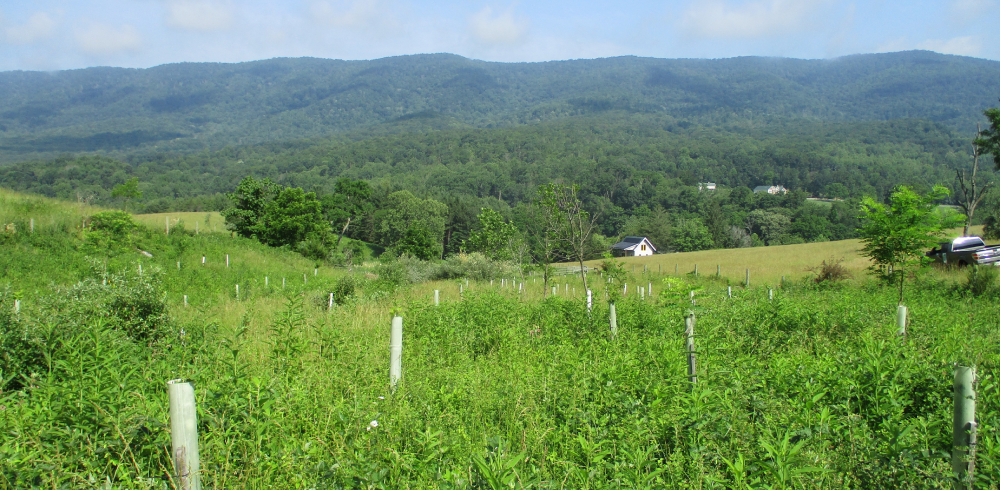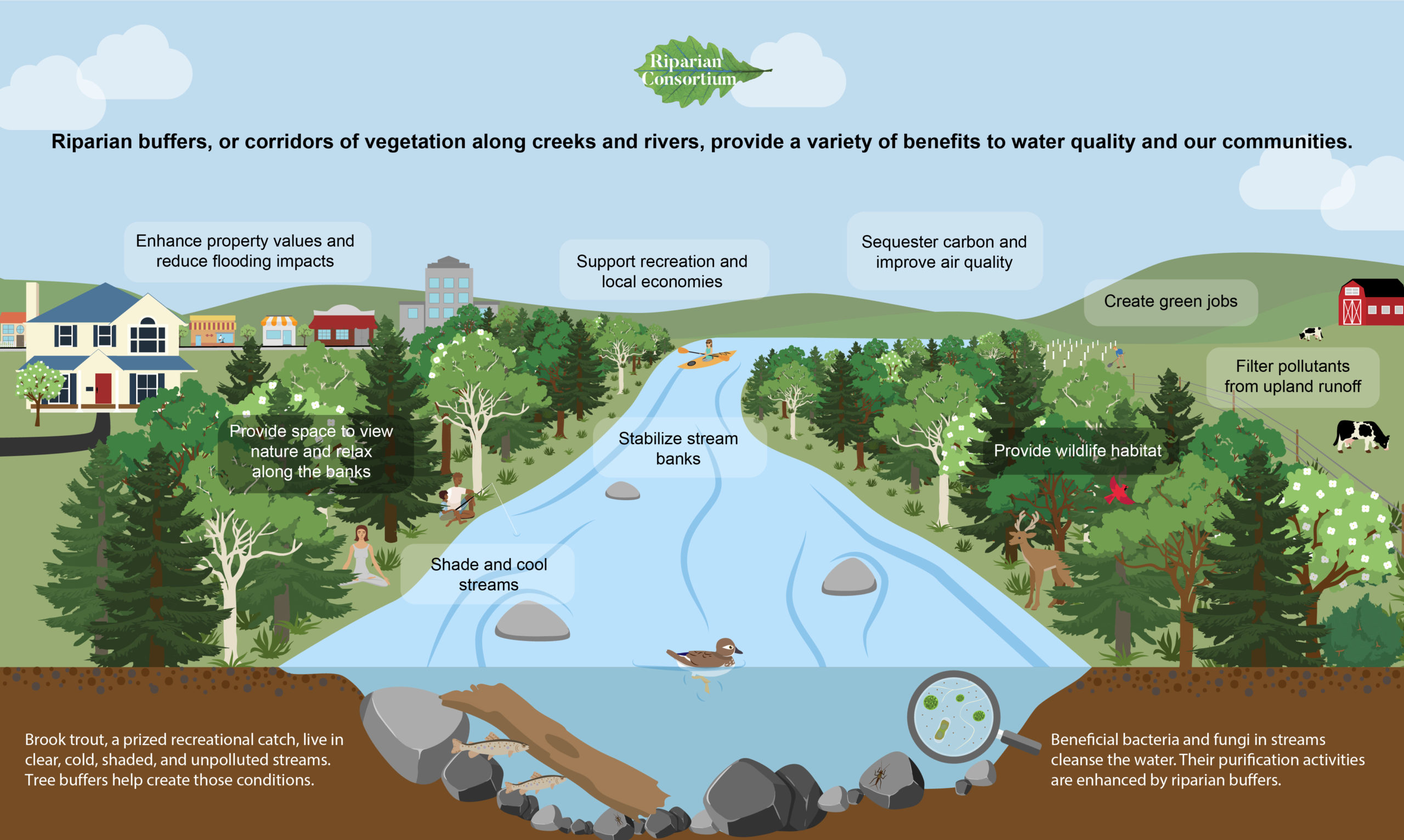The James River Association (JRA) serves as the convener for the Upper & Middle James Riparian Consortium (Consortium). This network of partners has a vision of “Growing partnerships to create healthy streamside ecosystems for clean water in the James River today and tomorrow”. They listen to the concerns of partners and create solutions together that would be hard to tackle alone. The new James River Stewardship Program (JRSP) is one of those solutions that has been realized through the Implementation Team!
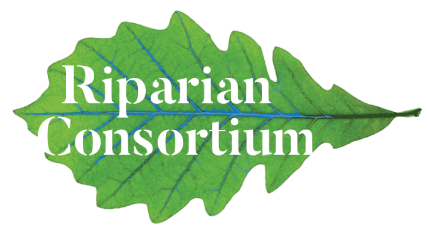
The Problem:
Stewardship of riparian forest buffers is consistently noted as the priority for Consortium partners. Most cost-assistance programs lack sufficient support for these tasks such as invasive species management and replanting in the early years, that are key to a forest buffer’s success. In addition, many partners lack additional staff capacity for getting boots on the ground to check on them.
The Solution
JRA, Virginia Department of Forestry, Natural Resource Conservation Service (NRCS), and the Farm Service Agency (FSA), with input from over a dozen partners of the Consortium Implementation Team, have developed the JRSP to protect the investment in riparian forest buffers, ensure positive examples of the practice through stewardship to increase adoption, and provide technical assistance through summer internships. Buffers installed through the Conservation Reserve Enhancement Program (CREP) by far make up the greatest acreage in the James River watershed and are the priority to address through this program in its 2022 pilot year.
Over a 12 week period during Summer 2022, two Seasonal Stewardship Assistants will assess 200 acres of riparian forest buffers installed through CREP in Rockbridge, Bath, and Allegheny Counties. Summer 2023 will include two regions being covered by 4 Assistants who will assess 400 acres. The Assistants will look at overall success of the buffer with special focus on establishment rate and invasive species cover, which will inform a recommendation report. These will be used to prioritize needed maintenance activities with a goal of performing invasive species management and replanting on 100 acres from November 2022-April 2023 and 200 acres from November 2023-April 2024.
2022 Pilot Region
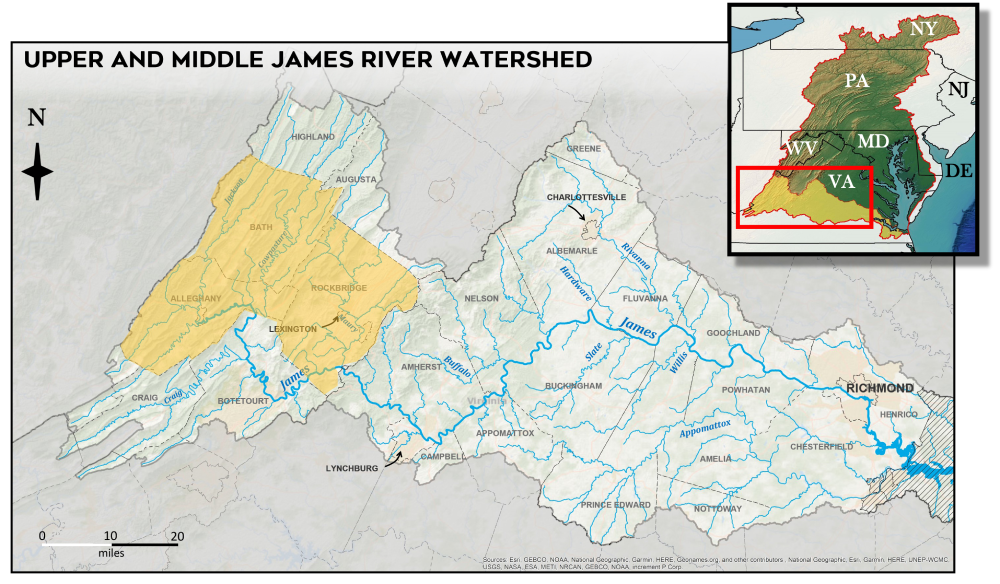
Meet our 2 Seasonal Stewardship Assistants for Summer 2022!
- Daniel Mitchell: Daniel was born and raised in Fancy Gap, Virginia. He just graduated from Ferrum College with a degree in Environmental Science. He also played football for Ferrum. Daniel’s interests in water quality, stream restoration, and the outdoors attracted him to the stewardship position. He would like to work in the fisheries and wildlife management field in the future. Daniel’s favorite river activity is fishing.
- Jordan Bennett: Jordan grew up in Bridgewater, Virginia. She just graduated from Bridgewater College with a degree in Environmental Science. Being in the outdoors while conserving the river systems is what drew Jordan to the stewardship position. She hopes to continue a career in conservation around the Shenandoah Valley. Her favorite outdoor activities include kayaking and taking her dog, River, swimming.
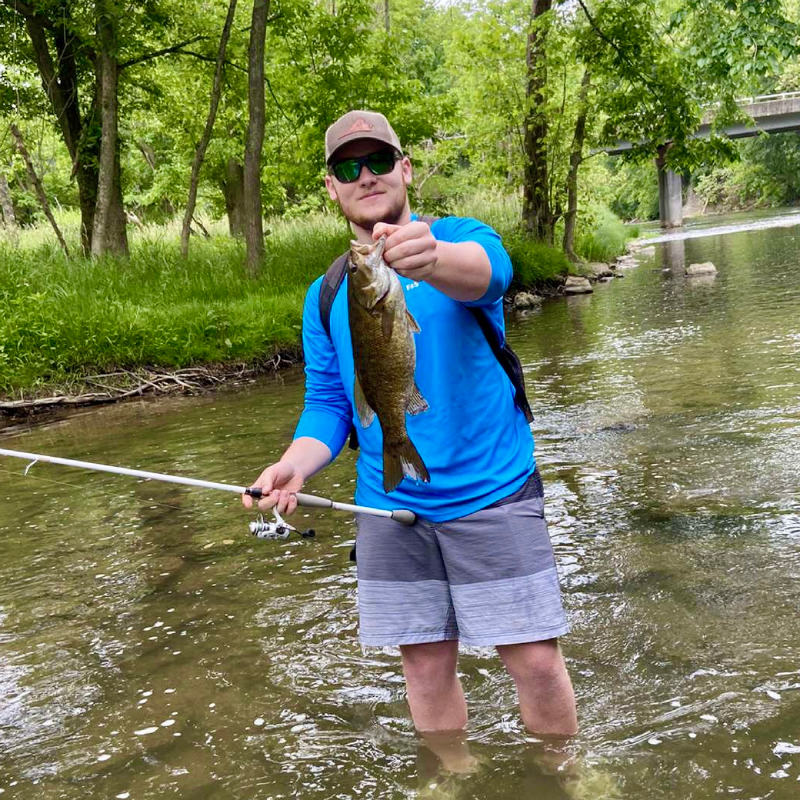

What’s their office look like for the summer so far? Check out these photos from a few of their site visits.
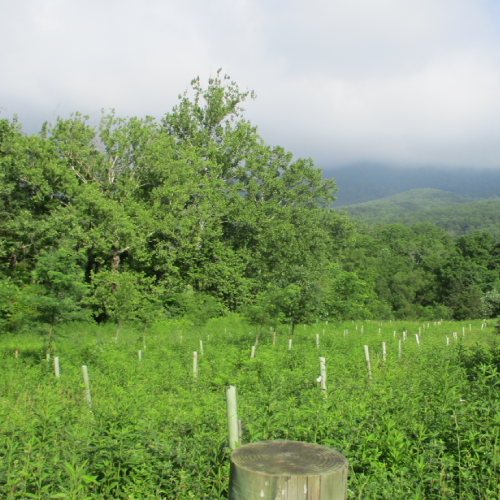
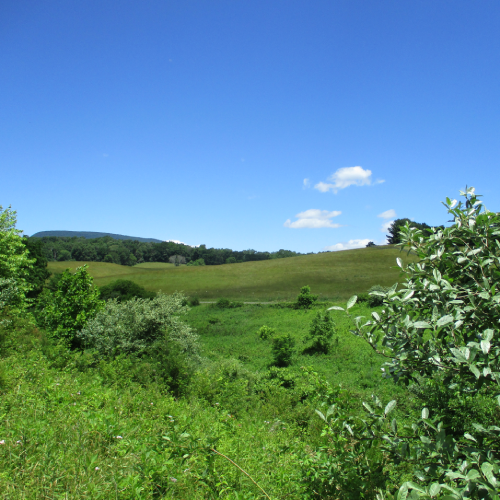
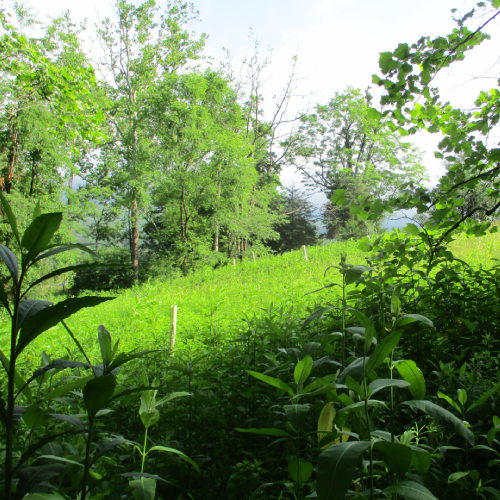
For more information about maintenance and stewardship of riparian forest buffers visit https://jamesriverconsortium.org/landowner-resources/buffer-maintenance-stewardship/
This initiative is made possible thanks to funding by the National Fish and Wildlife Foundation. The views and conclusions contained in this document are those of the authors and should not be interpreted as representing the opinions or policies of the U.S. Government or the National Fish and Wildlife Foundation and its funding sources. Mention of trade names or commercial products does not constitute their endorsement by the U.S. Government, or the National Fish and Wildlife Foundation or its funding sources.

